The internet is filled with foods that people must avoid at all costs if they want to lose weight. And while it is true that eating large quantities of sugary, fried, or ultra-processed foods isn't going to do wonders for your waistline, you may be surprised that there are some foods that may sound like "no-nos" on a weight loss diet, but they are actually OK for most people. In fact, there are plenty of foods you can still enjoy while dieting and don't have to give up to lose weight.
But before you go crazy eating these weight management-friendly foods in mass quantities, it is important that there are a few caveats to enjoying them if your goal is to lose weight. For one, proper portion sizes should be observed. Secondly, these foods should be enjoyed as a part of an overall balanced and healthy diet. Finally, you should remember that diet is just one part of the weight loss puzzle. Along with eating the "right" foods, physical activity, adequate quality sleep, and stress management should be prioritized as well.
So, along with eating your salads and baked chicken breast, here are 7 surprising foods you don't have to give up to lose weight.
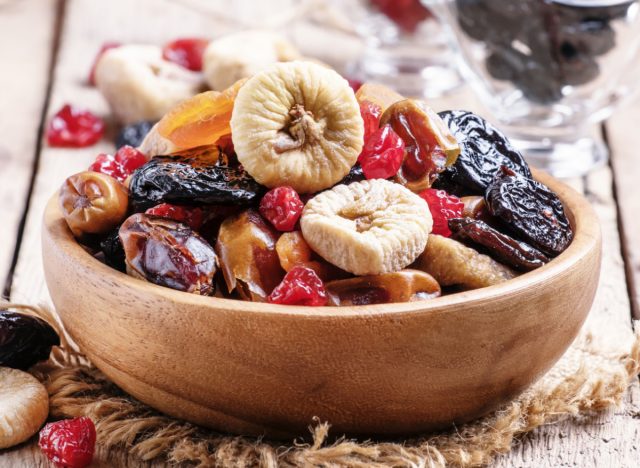
Prunes, raisins, and other dried fruit get a bad rap for being "full of sugar." But as long as you are getting a variety that contains zero added sugar and you are eating the recommended serving size, you can absolutely lean on dried fruit as a snack or an addition to your dishes. And data shows that those who eat dried fruit appear to have better diet quality and reduced obesity. Most varieties of dried fruit contain fiber, which can help promote the feeling of satiety.
It is important to remember that dried fruit is very nutrient-dense. So even though it may be tempting to eat large quantities of your dried apricots and apples, you should be mindful of what is considered to be an appropriate serving size. For example, one serving of raisins is one ounce, or around 40–50 raisins. And a serving of prunes is five pieces.
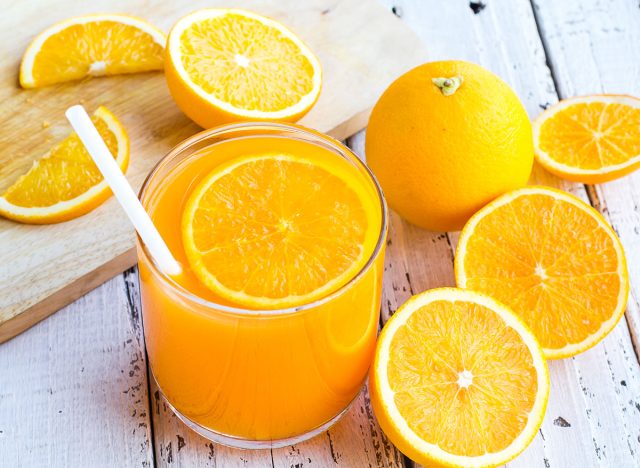
Like dried fruit, 100% orange juice has gotten a bad rap for being "full of sugar," even though the only ingredient found in this drink is real oranges. While it is true that 100% orange juice doesn't have the fiber that oranges have, it is a hydrating drink that is chock-full if important nutrients.
Observational data shows that adults who consume 100% orange juice tend to have significantly lower body mass index (BMI), waist circumference, or body fat when compared to those who don't drink orange juice. In adolescent boys, as 100% orange juice consumption increased, boys were less likely to be obese or overweight/obese compared to those who did not drink 100% orange juice.
One eight-ounce serving of 100% orange juice "counts" as one fruit serving. Sticking to one serving per day and pairing it with a source of fiber, healthy fats, and protein can help keep the satiety factor in check.
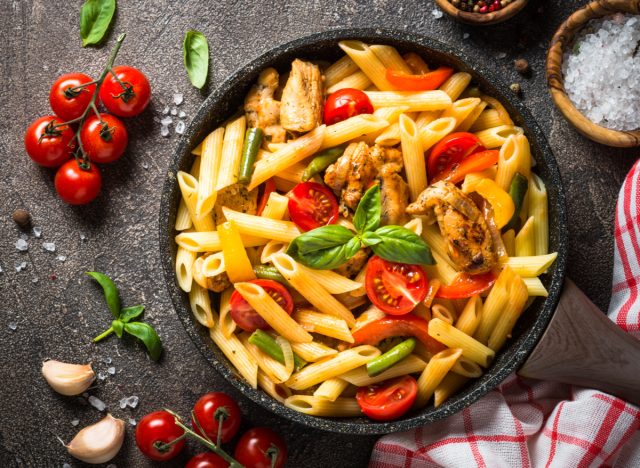
It is true that pasta is a refined carbohydrate, and it is often recommended that this category of food is limited when trying to lose weight. But pasta, and particularly semolina pasta, is a unique refined grain because its protein structure is digested more slowly, providing steady energy to the body instead of a spike in blood sugar.
In one study evaluating people who followed a low-calorie Mediterranean-style diet, those who included pasta in their diet at least five times a week experienced similar weight loss as those who ate pasta three times a week or less.
The key is to skip the oversized bowls of pasta that are topped with sausage, meatballs, or other fatty additions. A two-ounce serving of pasta makes about one cup of cooked pasta, which is about the size of one baseball. Instead, combine an appropriate serving of pasta—typically two ounces—with healthy fats, vegetables, and a little lean protein for a balanced meal.
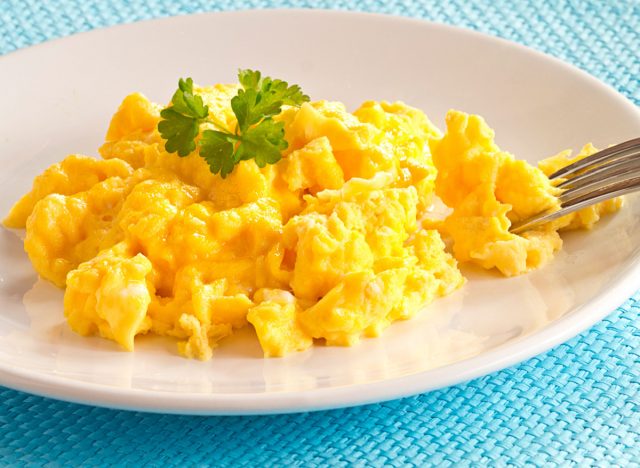
Eggs are a natural source of fat that isn't often thought of as a weight loss-supporting food. But, thanks to the high quality protein and fats that it provides, it can offer some serious satiety, which may help people eat less in the long run especially when they are enjoyed as a part of a weight loss diet.
The American Heart Association suggests that eating one egg (or two egg whites) every day is acceptable for people who eat them, as part of a healthy diet. Just keep in mind that many foods that oftentimes accompany eggs, like bacon and sausage, are not the most weight management-friendly choices, so be mindful of what you are eating your eggs with for the best outcomes.
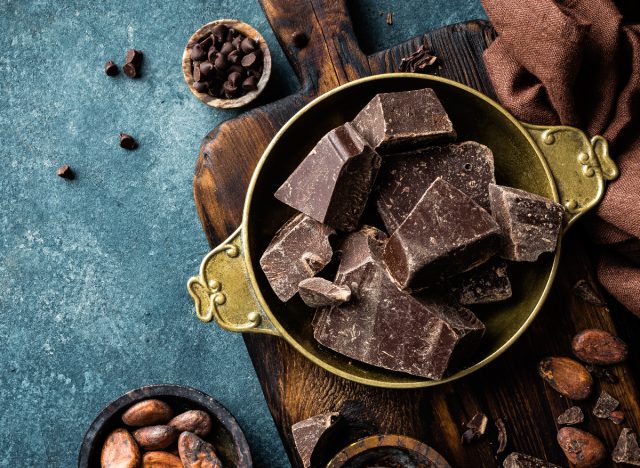
Grabbing a piece of chocolate can mean snagging a bar of super-sugary white chocolate from the drug store, a square of dark chocolate made with a high percentage of cacao, and many other options in between. Large quantities of chocolate, white chocolate, chocolate made with a low percentage of cacao, and options made with super-sugary mix-ins, like caramel, may not be the best choice when it comes to an addition to a weight-management diet. But data suggests that eating dark chocolate doesn't appear to be linked to weight gain.
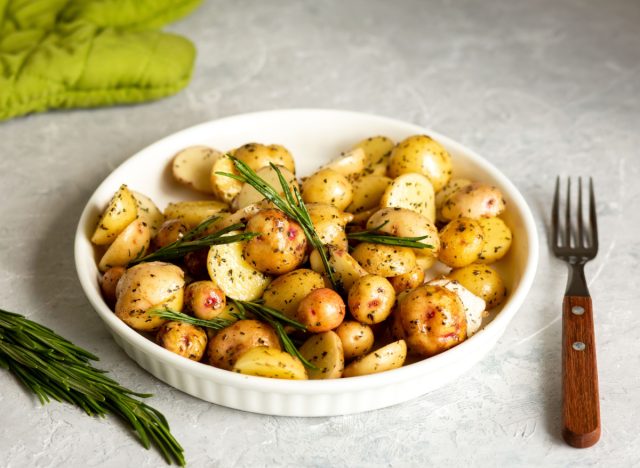
Potatoes are one of the most popular vegetables in the U.S. And depending on how you enjoy your spud, it may be acceptable to have it as a part of your weight loss diet.
Sure, eating large servings of deep fried French fries or baked potatoes that are overstuffed with bacon, sour cream, and other high-fat additions won't help you knock off those extra pounds. But enjoying a serving of white potato that is baked, boiled, or prepared in other ways that don't require additional fat may be perfectly acceptable for those focused on weight management.
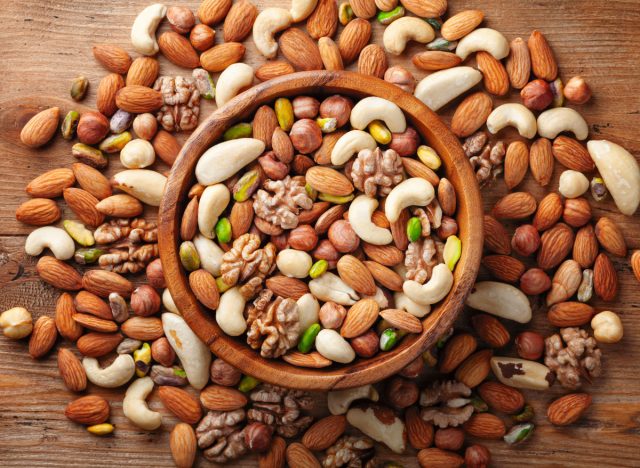
Nuts are high in fat and house a lot of calories in a tiny vessel. But most varieties of nuts are made of fats that are mostly healthy. Plus, they contain plant-based proteins and fiber to support satiety.
Eating pistachios can be one fantastic addition to a weight-management diet, especially if you are opting for ones that are sold in their shell. In one study, people who ate pistachios that were served in their shell consumed 41% fewer calories from the nuts versus those who were provided with shelled pistachios consumed an average of 211 calories; a difference of 86 calories. The difference in calories consumed may be due to the additional time needed to shell the nuts or the extra volume perceived when consuming in-shell nuts.
Lauren Manaker MS, RDN, LD, CLEC
7 Surprising Foods You Don't Have To Give Up for Weight Loss - Eat This, Not That
Read More


No comments:
Post a Comment